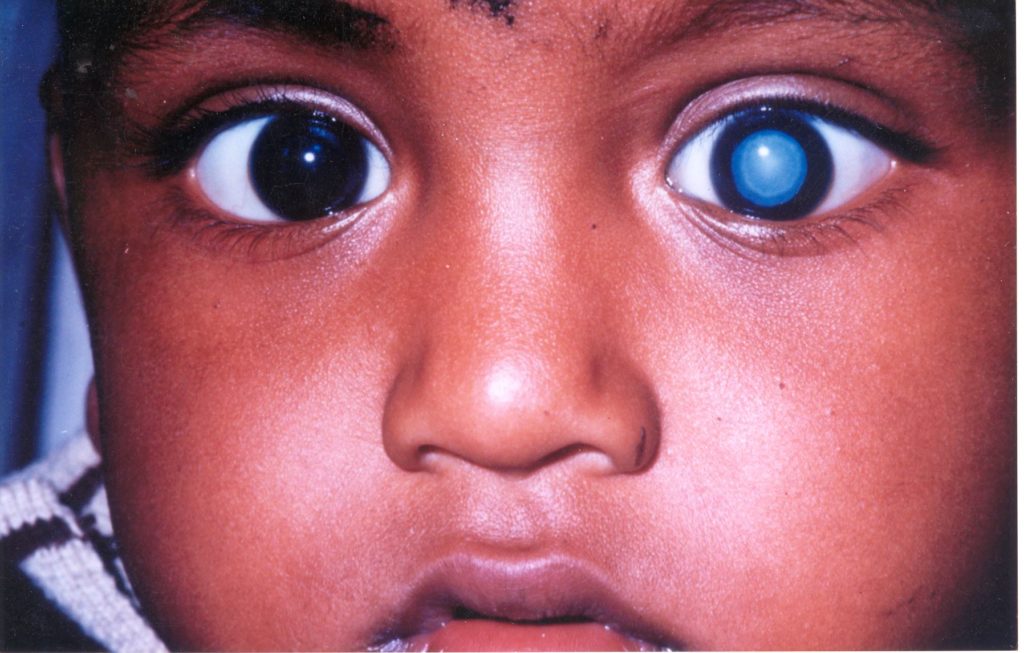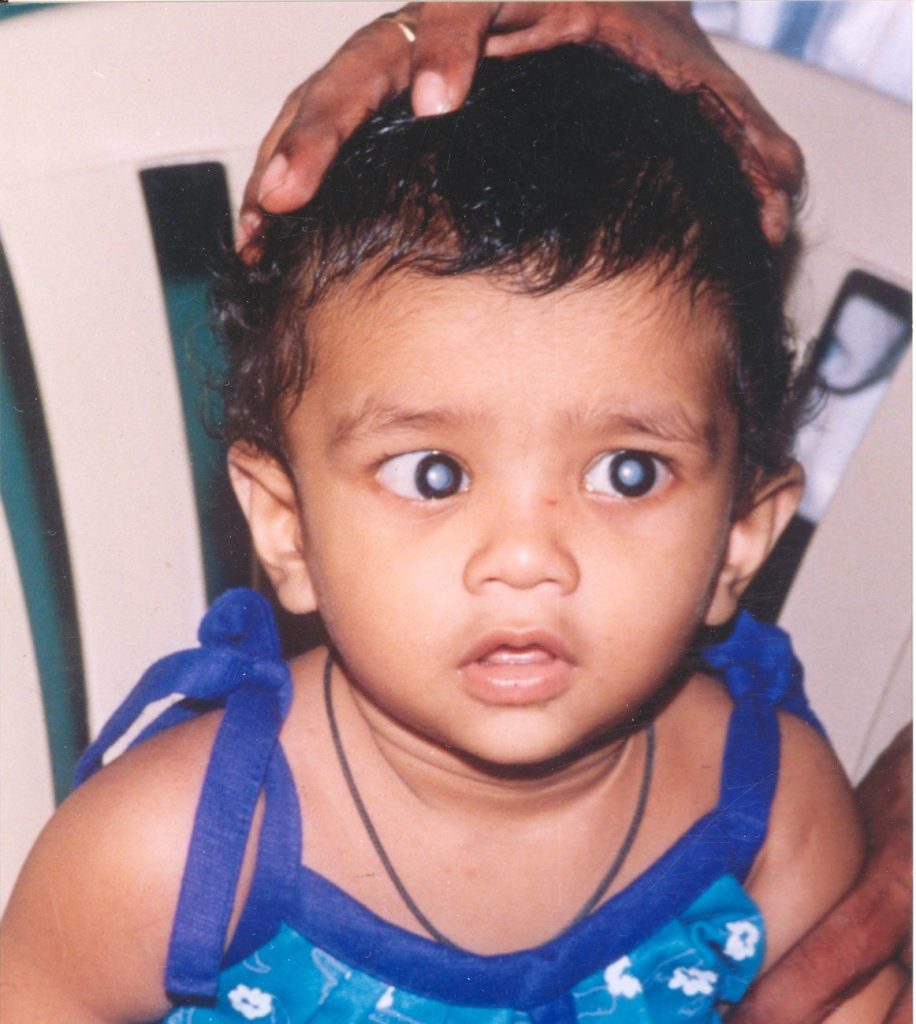About Cataract:
Cataracts are an eye condition where the lens of the eye becomes cloudy. The lens normally allows light to pass through the eye. When the lens becomes cloudy, not as much light can pass through, so vision becomes blurred. This can happen in one eye or both eyes.
Cataracts are most common in adults. However, they can also affect babies and young kids. Because the eyes are still developing, cataract should be treated right away. Delaying the treatment can increase the risk of lazy eye.
Types of Childhood Cataracts:
There are two types: congenital and juvenile. Congenital cataracts are found in newborn babies, while juvenile cataracts develop in toddlers or young children.
Causes:
In many cases, the exact cause is unknown. The main causes of congenital cataracts are genetic disorders (like Down’s Syndrome) and infections during pregnancy (like measles and rubella).
Juvenile cataracts are acquired later in life. They may be due to diabetes, eye trauma, infection by a parasite, or galactosaemia (a condition where the sugar in milk can’t be broken down by the body).
If you have a family history of childhood cataracts, your child may be at a greater risk.


The symptoms of the cataract are,
- Poor vision
- Rapid, uncontrolled eye movements (may look like shaking)
- Eyes point in different directions
- A white or grey pupillary reflex
These symptoms may be difficult to notice in young children. If your child has a hard time recognizing or following people, it may be a warning sign that something is wrong.
Cataract surgery is the only treatment for cataracts. The earlier the surgery, the better the outcome. The pediatric ophthalmologist will remove the cloudy lens. During surgery, your child will be put under general anaesthesia, meaning your child will be asleep so they don’t feel pain. The surgery is very quick and safe. In most cases, it can restore clear vision.
Types of Surgery:
In all cataract surgeries, the cloudy lens is removed. However, the doctor may then choose one of two options:
- Your child can wear glasses or contact lenses after the lens is removed
- An intraocular lens (IOL) may be put in the eye in place of the cloudy lens
Your child’s doctor will decide which type is best based on these factors:
- Age of the child
- Type of cataract
- Other eye diseases
- Ability of the parents to understand the condition
IOL lenses can be safely used in children above the age of 2. In a few cases, they may also be used in younger kids.
After the Surgery:
- The child should come regularly for eye checkups. Your doctor will tell you how often you need to come.
- Your child should stay in the hospital for 2-3 days to make sure the eye is healing well.
- Your child should avoid all outdoor activities for 4-6 weeks. This is to reduce the risk of injury.
- All children will require glasses for the best results (regardless of the type of surgery)
Should newborn babies with cataracts in both eyes undergo surgery immediately?
Yes. The child should have the surgery within the first 2-3 months after birth. In fact, it can be done as early as six weeks.
Will a 2-month old baby be able to withstand the surgery?
Yes. The surgery is so advanced that even a newborn baby can safely have surgery. General anesthesia will not harm your child.
Will the child need to wear glasses after the surgery?
Yes. Parents should make sure that the child always wears the glasses. This is important to make sure that the eyes develop properly. Choose a pair of spectacles that your child is comfortable using.
Will young children wear thick glasses?
Children are very smart. While they may resist at first, they will soon realize that they see better with the glasses. Even babies will start to like their glasses. Also, the glasses will only be thick if your child does not have an IOL. Children with implanted IOLs can wear thin, near-vision glasses.
Why can’t an IOL be used in my child?
- The eye may be too small
- The cataract may be in both eyes and the child is less than 2 years old
- They eye has inflammation
When is my child old enough for an IOL?
IOLs are safe for children older than 2. This is because the eye is rapidly growing at younger ages. It is hard to measure the IOL power that a younger child will need because their eye power has not stabilized.
Will the child need any other treatment after surgery?
Your child will have to wear glasses. If amblyopia has developed, your child may have to use patch therapy too. In some cases, children also need laser treatment for PCO. Cataract surgery is a necessary treatment, but it is only the first step.
Can normal vision be regained after cataract surgery?
It depends on:
- Your child’s age
- The type of surgery
- The time between the onset of cataract and the surgery
- How regularly your child uses their glasses
- How well the eyes and brain develop
If the cataract is mild and the cataract is treated early, there is a better chance that vision will improve.
Will vision improve immediately after surgery?
This also depends on your child’s exact situation. Depending on your child’s age, how early the cataract was treated, and how bad it was, vision may or may not improve immediately after surgery.
When can we expect vision to start improving?
Vision often improves gradually after the surgery. Even then, glasses and patch treatment may be needed to make the affected eye stronger. Since the eyes are still developing in children, you will need to monitor your child’s eyes for the next few years to make sure they are growing as they should.
Can nutritious food and vitamin tablets cure cataract?
Taking nutritious food is good for health but it can’t help to cure cataract.
